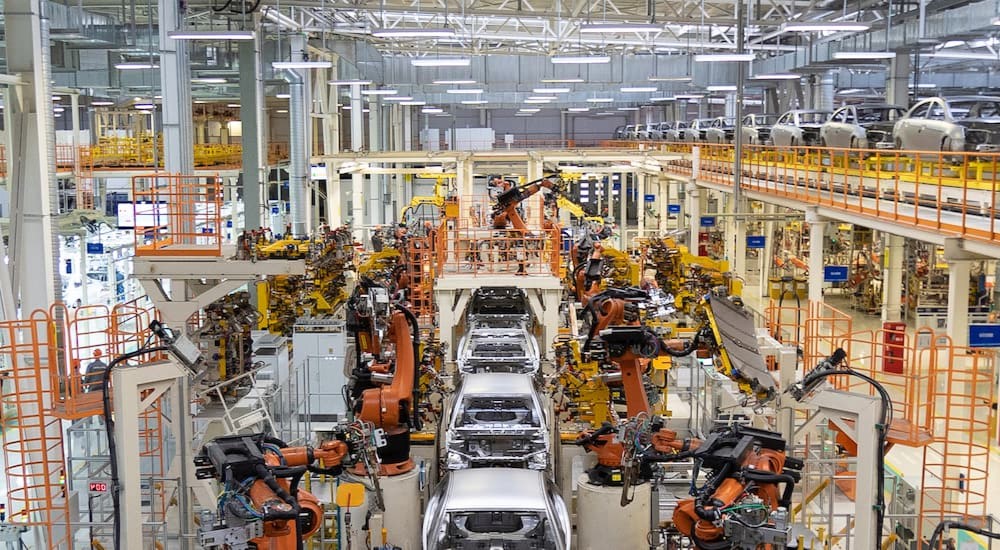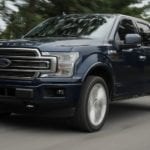Over 100 car companies have called Detroit home over the last century or so, which begs the question, why this particular area? For starters, Detroit is nestled in an advantageous location, with an abundance of wood from nearby forests, which helped build early car frames, as well as a plentiful supply of iron ore. Not only is Detroit located within a rich natural landscape, in the auto industry’s heyday, it was within close proximity to railroads and water transportation, which enabled the seamless delivery of goods. Today, Detroit is home to only a handful of automakers. When it comes to Detroit car sales, you’ll find that this area has plenty of options thanks to the few manufacturers who decided to stay. Come on a trip with us as we explore the history of the car factories in Detroit and how they shaped the industry forever.
The Big Three
Although many automakers have passed through this area, the fame belongs to The Big Three: Ford, General Motors, and Chrysler. It was believed that Henry Ford, a Detroit native, ushered in a wave of automakers opening up shop in the area. In 1896, Ford opened his first shop behind his house, tinkering on what would eventually become the famous Model T. In 1908, this car would make its grand debut, becoming one of the most influential vehicles of all time. With the idea of working smarter, not harder, Ford implemented the first mass production auto assembly plant to crank out more of his popular vehicles. Ford eventually purchased the River Rouge Plant in Dearborn, which became famous for being able to view the entire auto manufacturing process in the course of a day.
Although Ford was quite a few steps ahead, it didn’t stop General Motors mogul William C. Durant from opening up shop in 1908. The company would go on to acquire a host of famous automakers, including Oldsmobile, Pontiac, and others to become one of the biggest auto giants in history. With a strong presence in wartime efforts, GM was known for designing durable trucks and military vehicles. However, soon after World War II, the brand shifted its focus on creating some of the most inspiring vehicles of our time, including the Pontiac GTO and Chevy Camaro. As one of the world’s largest automakers, General Motors has continued to showcase highly respected vehicles, which feature upscale style, groundbreaking innovation, and unmatched capabilities to make it one of the most recognized brands in the industry.
Originally under the Maxwell Motor Company umbrella, Chrysler didn’t get its big break until the mid-1920s when former Buick head Walter P. Chrysler took charge and renamed the company after himself. Under his supervision, Chrysler began to unveil vehicles that prioritized performance. Like many other automakers of the time, Chrysler also spent some time manufacturing vehicles for the war. However, in the 1950s and 60s, the muscle car generation was in full swing, and Chrysler stood at the helm. From the Chrysler 300 to the Imperial LeBaron, Chrysler made a name for itself to propel the brand to the head of the pack of Detroit auto pioneers.
Early Trendsetters
The Big Three certainly put Detroit on the map, but there were others that came along around this same time who also contributed to Detroit’s reputation in the automotive industry. Perhaps one of the earliest was Oldsmobile. While they were later absorbed by General Motors, before this occurred the brand was one of the first on the scene. Founded by Ransom E. Olds, who built his first steam-powered car in 1887, the Olds Motor Vehicle Company officially entered the industry in 1897 showcasing four vehicles. Oldsmobile was considered the very first brand to produce multiple vehicles at once, seeking to bring more cars to the masses at a quicker pace than competitors. Unfortunately, Olds’ Detroit facility was destroyed by a fire, prompting him to move back to Lansing. However, in 1908, Oldsmobile joined forces with industry giant William C. Durant, later relocating back to Detroit until the brand was eventually dissolved in the early 2000s.
Another big name that called Detroit home was Buick, which got its start in 1903 by Scottish businessman David Dunbar Buick. Although his first business venture in the United States was in the plumbing industry, Buick quickly became interested in gasoline engines, primarily for agricultural use. It didn’t take him long to form the Buick Manufacturing Company, which built its first automobile in 1903. Just a year later, William C. Durant joined the Buick team, taking over the company soon after. The Buick brand would later become a part of General Motors as one of their luxury brands. Buick is one of the oldest continuously operating brands in the automotive industry.
Right above Buick on the GM spectrum of luxury vehicles is Cadillac, which was founded in 1905. As the first automaker to feature replaceable parts, Cadillac set itself apart from the rest, prompting General Motors to purchase this company in 1909. Cadillac wasn’t just an upscale brand. It was at the forefront of many advancements in the auto industry, including the first fully enclosed car which debuted in 1906. Cadillac became the first brand with power steering in all of its models in 1954, and the first vehicle with night vision technology in the DeVille in 1999. Today, Cadillac remains one of the most sophisticated brands on the road with vehicles that perform to higher standards.
Perhaps one of the biggest trendsetters in early Detroit auto history is Chevrolet. It was founded in 1911 by Swiss race car driver Louis Chevrolet, and a name that we know all too well, William C. Durant. Durant seemed to have his hand in many business ventures of the time, which really paid off, especially with Chevrolet. Known for designing vehicles with desirable features for affordable prices, the Chevy name took off. From the timeless Bel Air of the 1950s to muscle cars like the Corvette and Chevelle, Chevrolet is one of the most famous automakers that has ever called Detroit home.
Other Auto Legends
There are too many automakers to name that got their start in Motor City, brands that have shaped the way we travel and continue to do so for the foreseeable future. Among some of the more well-known automakers that have, at one point in time, called Detroit home, include:
- Dodge
- American Motors Corporation (which includes Jeep)
- Ram Trucks
- Lincoln Motor Company
- Mercury
- Plymouth
The list goes on. From early pioneers to late-starters, Detroit has seen its fair share of auto legends pass through. It served as the hub for the automotive industry, especially during its heyday in the early 1900s, providing a place for engineers and visionaries to create machines that would shape the future of our travels.
Detroit Today
Currently, some big names are still headquartered in Detroit, including General Motors, Ford Motor Company, and Stellantis. With 11 assembly plants still in operation in the Detroit area, the auto industry will forever be entwined with Detroit history. Perhaps one of the largest facilities located in Detroit is GM’s Factory ZERO, the brand’s first fully dedicated EV assembly plant, responsible for creating vehicles such as the GMC Hummer EV and Chevy Silverado EV. It runs on sustainable energy, showcasing advanced manufacturing which will undoubtedly impact the industry in ways we never thought possible. If you think that the auto industry is all but extinct in the Detroit area, you’d be mistaken. As the area continues to navigate the ups and downs of the industry, the future is looking bright for Motor City and for modern-day travel.






